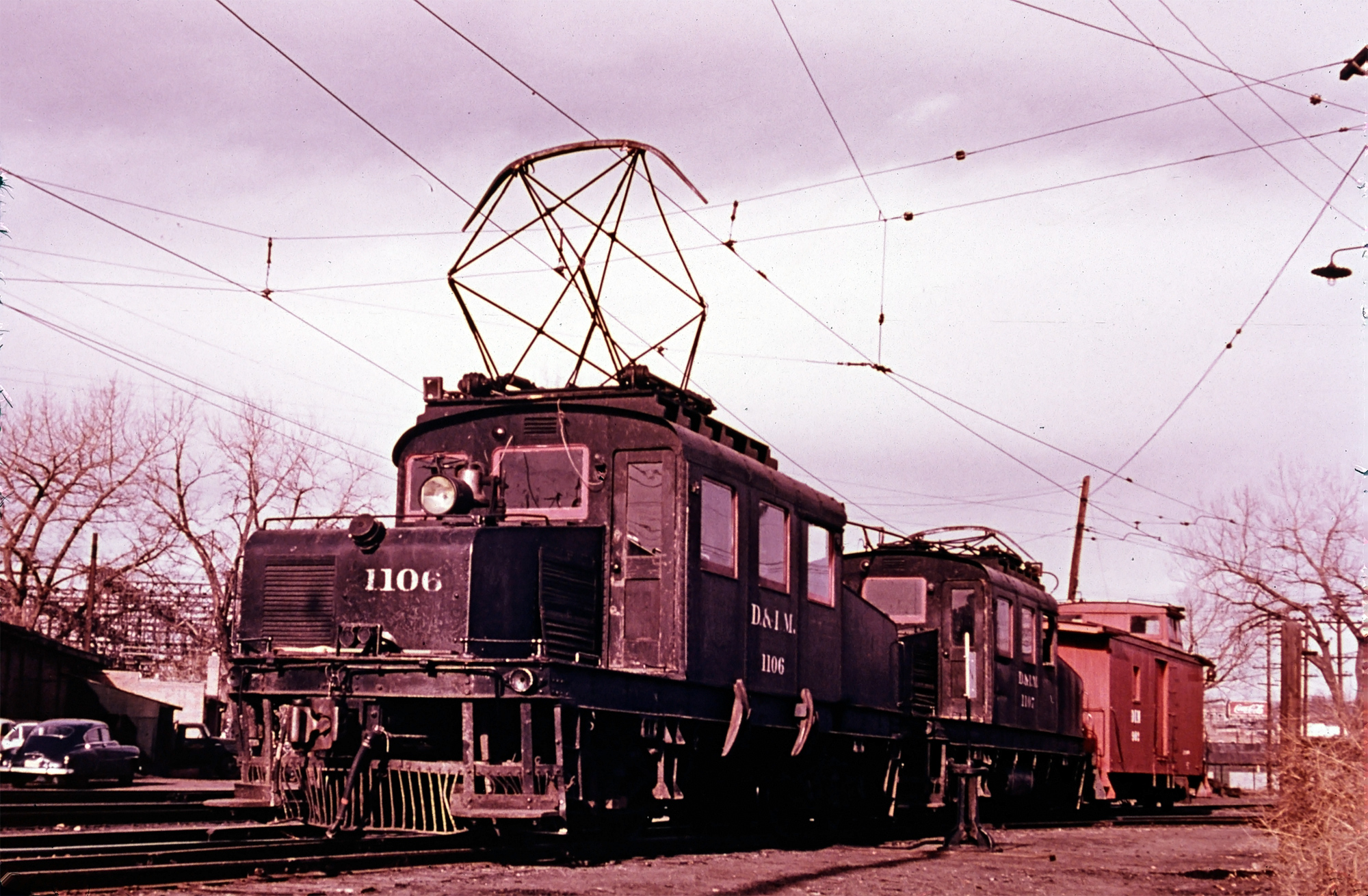- Home ›
- Interurbans ›
- Colorado
Colorado Interurbans and Streetcars: History, Lines, Photos
Last revised: September 10, 2024
By: Adam Burns
During the peak years of interurban operation, Colorado contained 142 miles of track, most of which was centered between Denver, Golden, and Boulder. In total there were five electrically operated systems that could be classified as interurbans according to Dr. George Hilton and John Due's book, "The Electrified Interurban Railways In America."
These included the Denver & Intermountain Railroad, Denver & Interurban Railroad, Colorado Springs & Cripple Creek District Railway, Grand River Valley Railroad, and Trinidad Electric Transmission, Railway & Gas Company. The interurban aspects of these systems were largely gone by the 1920s although freight operations on the Denver & Intermountain to Golden survived until March 15, 1953.
 Denver & Intermountain steeple-cabs #1106 and #1107 at the interurban's shops on the final day of freight operations; March 15, 1953. American-Rails.com collection.
Denver & Intermountain steeple-cabs #1106 and #1107 at the interurban's shops on the final day of freight operations; March 15, 1953. American-Rails.com collection.Boulder Street Railway
The Boulder Street Railway was built and operated by Western Power & Light. It began operations in 1899 operating a three-mile stretch of track, which mostly served Colorado University. It operated until June of 1931 when it was abandoned in favor of buses.
Cripple Creek District Railway
The Cripple Creek District Railway was incorporated in 1897 to serve Cripple Creek, Poverty Gulch, Midway and Portland Mine.
Just two years later in 1899 it became part of the Colorado Springs & Cripple Creek District Railway. The railroad eventually operated 12 miles of track and became part of the Colorado & Southern Railway 1904. All operations were abandoned in 1920.
Denver & Intermountain Railroad
The Denver & Intermountain Railroad opened in 1893 connecting Denver and Golden, a distance of 23 miles. It was originally steam powered but switched to electric in 1909.
While the railroad was mostly an interurban operation it also had some freight service. Interestingly, the railroad lasted until March 15, 1953 when all services were suspended (passenger service had ended in 1950).
Denver & Interurban Railroad
The Denver & Interurban Railroad was a Colorado & Southern subsidiary and connected Denver to Boulder, a distance of 51 miles. It began electric operation in 1908 employing 11,000-volt AC system for power.
Being the only service between the two cities the railroad saw heavy traffic but unfortunately few profits. It was no longer profitable after 1923 and ended operations on December 15, 1926.
Durango Railway & Realty Company
The Durango Railway & Realty Company was one of the smallest streetcar systems ever operated connecting Durango and Las Animas, a distance of just two miles. It ceased operations in 1921.
Southern Denver Light & Power Company
The Southern Denver Light & Power Company operated a short electric interurban operation through the town of Pueblo. It operated until the early 1940s.
Grand River Valley Railroad
The Grand River Valley Railroad, the "Fruit Belt Route". It served Grand Junction and Fruita and also operated freight service to the nearby fruit and vegetable farming in the area.
It was completed in 1910 as the Grand Junction & Grand River Valley but the name was shortened in 1914. It was unable to remain profitable after the Great Depression and was shutdown in 1935.
Colorado Springs & Cripple Creek District Railway
The CS&CCD was a successor of the Cripple Creek District Railway mentioned above and its earliest history dates back to 1897.
It operated some extremely steep lines, as high as 7.5% and began further expansions around 1899. At its peak the interurban served Cripple Creek, Poverty Gulch, Midway, Battle Mountain, Elkton, and other small mining communities.
Given that it was located in the hear of the state's mining region it offered both extensive freight and passenger service although its extremely steep main line, which crossed Hoosier Pass (making it the highest altitude interurban ever operated), made for difficult operations.
In 1904 the system came under the control of the C&S. On November 21, 1919 a fire severely crippled operations when the carbarn was destroyed and much of the equipment. Profits already been very thin it was abandoned in 1920.
Trinidad Electric Transmission Railway & Gas Company
This interurban dated back to its opening on April 28, 1904 serving Trinidad, Sopris, and Starkville. Later, operations were extended to Cokedale.
While just over ten miles in length it featured grades surpassing 7%, which made operations difficult. With only small communities served passenger service was abandoned in 1923 while freight service remained until after World War II.
Contents
Cripple Creek District Railway
Denver & Intermountain Railroad
Durango Railway & Realty Company
Southern Denver Light & Power Company
Recent Articles
-
New York - Murder Mystery - Dinner Train Rides
Dec 13, 25 10:30 AM
New York State, renowned for its vibrant cities and verdant countryside, offers a plethora of activities for locals and tourists alike, including murder mystery train rides! -
Pennsylvania - Murder Mystery - Dinner Train Rides
Dec 13, 25 10:25 AM
Pennsylvania, steeped in history and industrial heritage, offers a prime setting for a unique blend of dining and drama: the murder mystery dinner train ride. -
Ohio - Murder Mystery - Dinner Train Rides
Dec 13, 25 10:14 AM
The murder mystery dinner train rides in Ohio provide an immersive experience that combines fine dining, an engaging narrative, and the beauty of Ohio's landscapes.



